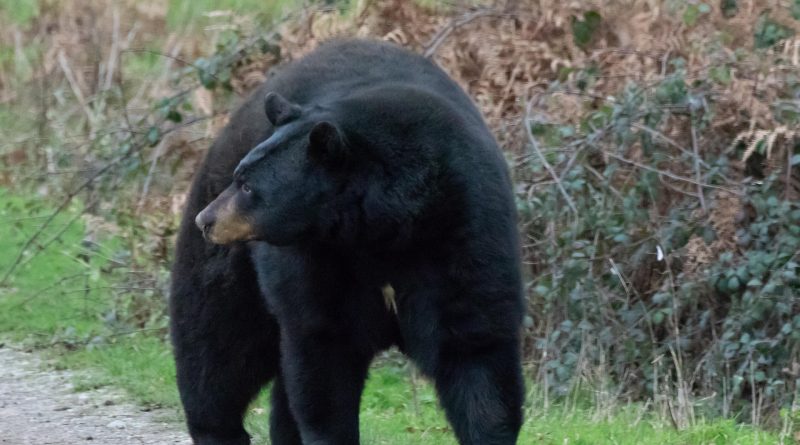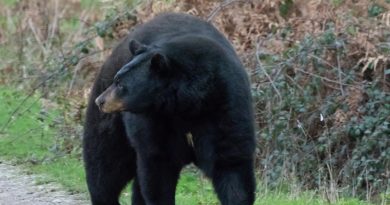September is a Deadly Month for BC Black Bears
Image by Kev from Pixabay
Our thanks to the Fur Bearers Association for the information below about the risk to black bears at this time of year and what you can do to help.
From The Fur Bearers:
September is an important time for wildlife across British Columbia as animals prepare for winter. For black bears, however, it’s one of the most dangerous months. Year after year, more black bears are killed by the BC Conservation Officer Service (COS) in September than at any other time.
Why? Because in the fall, bears are experiencing hyperphagia, a biological drive to eat as much as possible to build the fat reserves they will rely on throughout their winter dormancy. Ideally, they would spend the fall foraging and hunting for nuts, berries, fish, and other seasonal foods. But in communities across BC, unsecured garbage, fruit trees, bird feeders, and outdoor pet food create dangerous temptations. When bears pursue these anthropogenic food sources, conflicts arise, and too often the response is lethal.
Beyond Garbage: A Bigger Problem
While unsecured garbage and accessible fruit can attract bears, the BC government’s approach often contributes to the issue. The Conservation Officer Service and, more broadly, the BC government (including the Ministry of Water, Land, Resource Stewardship) have long been criticized for relying heavily on lethal responses rather than prevention and non-lethal management. The province has been slow to provide adequate funding for education, enforcement of attractant bylaws, and community-based coexistence strategies, all of which contribute to the outcome of healthy bears being unnecessarily killed.
As The Fur-Bearers have previously highlighted, these killings are often mislabeled as “euthanasia,” but the reality is that these are preventable deaths. The system prioritizes short-term removal over long-term solutions, putting both bears and communities at risk.
Prioritizing Prevention
Coexistence works when communities take proactive steps to reduce conflict. Securing garbage, harvesting fruit promptly, and removing outdoor attractants are crucial first steps. Municipal bylaws can reinforce these measures, but they require public education and proper enforcement in order to be effective.
Equally important is a shift in provincial policy. The province could improve by:
- Increasing investment in non-lethal tools and training for COS officers.
- Supporting community-led coexistence initiatives.
- Increasing transparency, reporting, and accountability when bears are killed.
What You Can Do
Every resident has a role to play in preventing conflict and protecting bears this September. Start by checking your property for attractants and ensuring they are secured; our Fall Wildlife Attractants Checklist can help you identify and address risks around your home. Encourage your neighbors to do the same, and reach out to local officials about policies that prevent conflict in your area. And, of course, never feed bears or other wildlife.
Black bears are an integral part of BC’s ecosystems and cultural identity. Through meaningful action at both individual and provincial levels, we can work toward a future where fall is not the deadliest season for bears, but simply another chapter in their natural cycle of life.
For more on this topic, check out:




